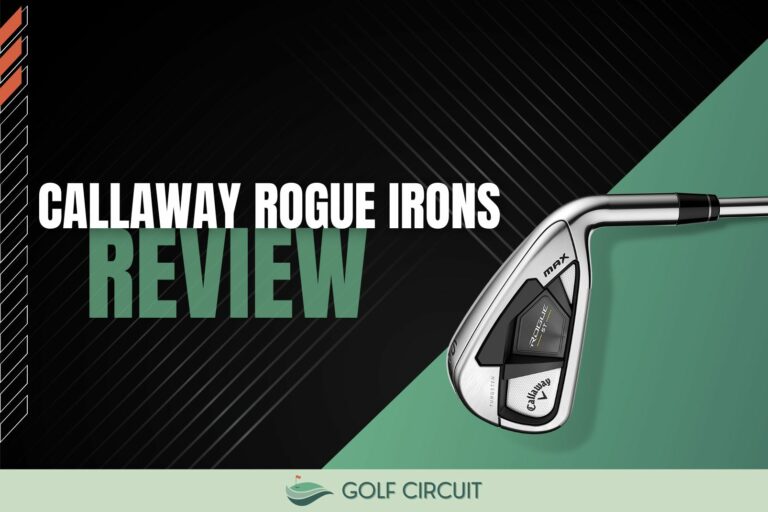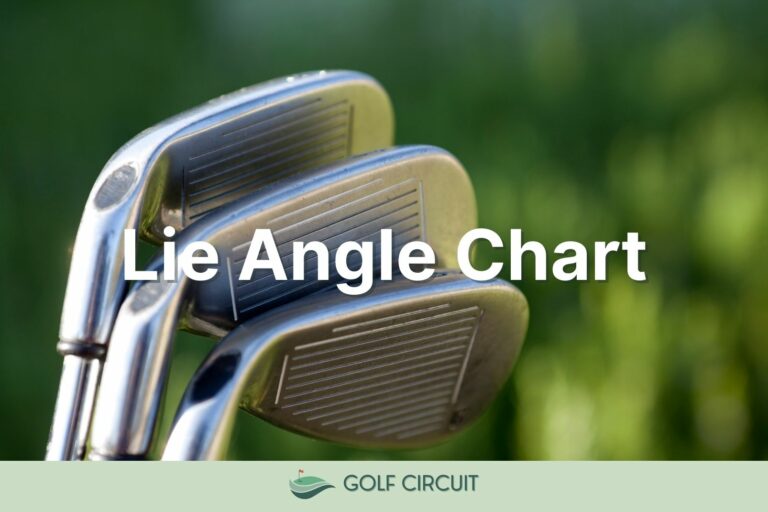54 vs 56 Degree Wedge: Which Is Best For You?

If you have noticed more and more wedge loft options on the market in recent years, it is not by accident. Iron lofts are getting stronger, and the gaps between the pitching wedge and lob wedge are getting wider.
This is where the 56 or 54 degrees come into play. Typically considered a sand wedge, the 54 and 56 degree wedge have quite a bit in common, but you will have to spend some time deciding which of these is best for your game.
Let’s look at the 54 vs. 56 degree wedges and what you need to consider before you buy or use one or the other.
54 vs 56 Degree Wedge: What Are The Differences

The 54 and 56 degree wedges are very close in loft, so I can tell you that they are very similar. However, there are some distinct differences in the playability that all golfers should consider.
Distance
The 56 and 54 degree wedges will be similar from a distance perspective, as two degrees of loft isn’t much. However, the 54 degree wedge will go further than the 56 degree wedge.
Many golfers that use a 56 degree wedge for a 90 yard shot will see closer to 85 yards with the 56 degree wedge.
Although distance in longer clubs like hybrids and fairway woods is very important, it’s not all that important with the wedges. Total distance should not be your motivation for choosing one wedge over another.
Control
With a wedge that has slightly lower loft, you can sometimes control the shots a bit easier. This control comes in the form of keeping the ball flight down and accurate.
Essentially the higher a golf ball gets, the more room there is for error.
Many golfers that choose the 54 degree wedge are trying to keep the ball flight controlled and ensure that they keep the ball a little straighter. Control on wedge shots is becoming more and more popular from a fitting perspective as well.
Players are looking for slightly lower ball flights that allow the ball to stop quickly when hitting the green.
Usability
The usability of a golf wedge describes how easy it is to hit more than just a standard full swing golf shot. With wedges, you will want to be able to hit half shots, ¾ shorts, and even small pitch and chip shots.
Although the usability of each of these wedges is similar, the 56 degree wedge is a bit easier to manipulate.
The extra loft in the club tends to make those higher shots an option. You can also de loft the club a bit and still get a lower, more penetrating ball flight.
Forgiveness
Forgiveness will come down to the brand and style of wedge you purchase, a bit more so than the loft. Most golfers will find that the 54 and 56 degree wedges have the same amount of forgiveness.
For most players, chunking and skulling shots are the major concern with wedges.
However, your chance of skulling or chunking a 54 vs. a 56 degree wedge will be about equal. In addition, the amount of bounce that the wedge has will also play into the total forgiveness.
The bottom line here is that if you want more forgiveness, look for a cavity back style vs blade style wedge. This is really what makes it easier to get the ball pin high.
Loft/Launch
The most obvious difference between a 54 and 56 degree wedge has to do with the loft. The 56 has two degrees more loft than the 54 making it a bit easier to hit high-lofted shots.
The higher the loft of a wedge, the easier it is to get over a big lip of a bunker.
This is an important consideration with the 54 and 56 degree wedge as they are both commonly used from greenside bunkers or tight lies. Those that struggle to get enough loft on their shots will like what the 56 has to offer.
Availability
Most golf club manufacturers make both a 54 and 56 degree wedge. However, it is possible to come across situations where the 54 degree is not available.
Sometimes wedges, especially value wedges, are sold as a set of three. These are typically 52, 56, and 60 degrees. Keep this in mind if you are looking for something to fit in with the rest of your clubs in your bag; it’s not always possible to find the 54.
However, if you stick with something like the Callaway Mack Daddy or Titleist Vokey, you have a wide range of lofts to choose from.
Should I Carry A 54 or 56 Degree Wedge?
Now that you have a better understanding of what a 54 and a 56 degree wedge are, it’s time to determine which one is the best for your game. The other golf clubs you carry in your bag are going to be the number one factor for deciding which wedge you want to carry.
Golf Club Set Makeup
If you are building out a set of clubs, you will first want to look and see what the loft of your pitching wedge is.
The pitching wedge is typically the highest lofted iron and will match the rest of the irons in the bag. Many pitching wedges will be around 45 degrees.
Some golf manufacturers make more traditional pitching wedges with closer to 47 or 48 degrees of loft. The more you move towards game improvement and distance irons, expect some in the 43 or 44 degree range.
As you can imagine, the gap from a 44 degree pitching wedge down to a 56 degree sand wedge is a big one. For golfers that don’t want to carry a gap wedge to fill in this space, a 54 degree wedge is the better choice.
Some golfers have room for four types of wedges in their bag; pitching wedge, gap wedge, sand wedge, and lob wedge. Others will try to go with a pitching wedge, sand, and lob. Regardless of what you choose, the loft is going to be a big consideration.
Handicap Level

With many higher handicappers, the ability to get out of a bunker with a 54 degree wedge is a bit difficult. It may make more sense to use a 56 degree wedge with extra loft.
The higher loft is a great choice for a shot that comes up quickly and lands softly on the green.
Frequently Asked Questions
Here are a few of the most common questions about the 54 vs. 56 and which one is the better wedge to have in the bag.
Which is better, 54 or 56 degree wedge?
The 54 and 56 degree wedges are very similar, but the 56 degree wedge tends to be a bit more popular as it is easier to stop the ball on the green with this club in your hands.
What is a 54 degree wedge used for?
A 54 degree wedge can work as a gap wedge for some golfers between the pitching wedge and a higher lofted lob wedge. In addition, this is a good golf club for getting out of the bunker or hitting chip or pitch shots from around the green.
What is a 56 degree wedge used for?
A 56 degree wedge is used to hit higher lofted shots around the green. Some golfers also find that the 56 degree wedge is a good full approach shot from the 75-100 yard range.
How far should you hit a 56 degree wedge?
How far you hit a 56 degree wedge depends on clubhead speed. For a golfer with average club head speed, the 56 degree wedge goes between 80-90 yards.
What 3 wedges should I carry?
If you can only carry three wedges in your bag, it makes sense to have a pitching wedge, a 54 degree sand wedge, and then a 60 or 58 degree lob wedge.
Final Thoughts
Hopefully, you better understand the differences between the 54 vs. 56 degree wedge. It’s important to remember that the other clubs in your bag will determine which loft wedge is the best for you.
For golfers that carry just three wedges, the 54 degree tends to be the popular choice. Golfers that carry the 56 degree wedge often enjoy higher ball flight, especially out of those tricky lies in the sand.






